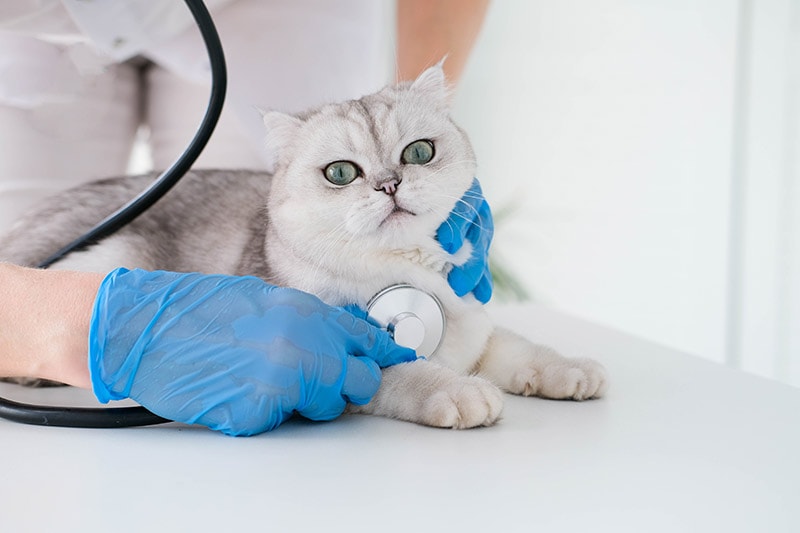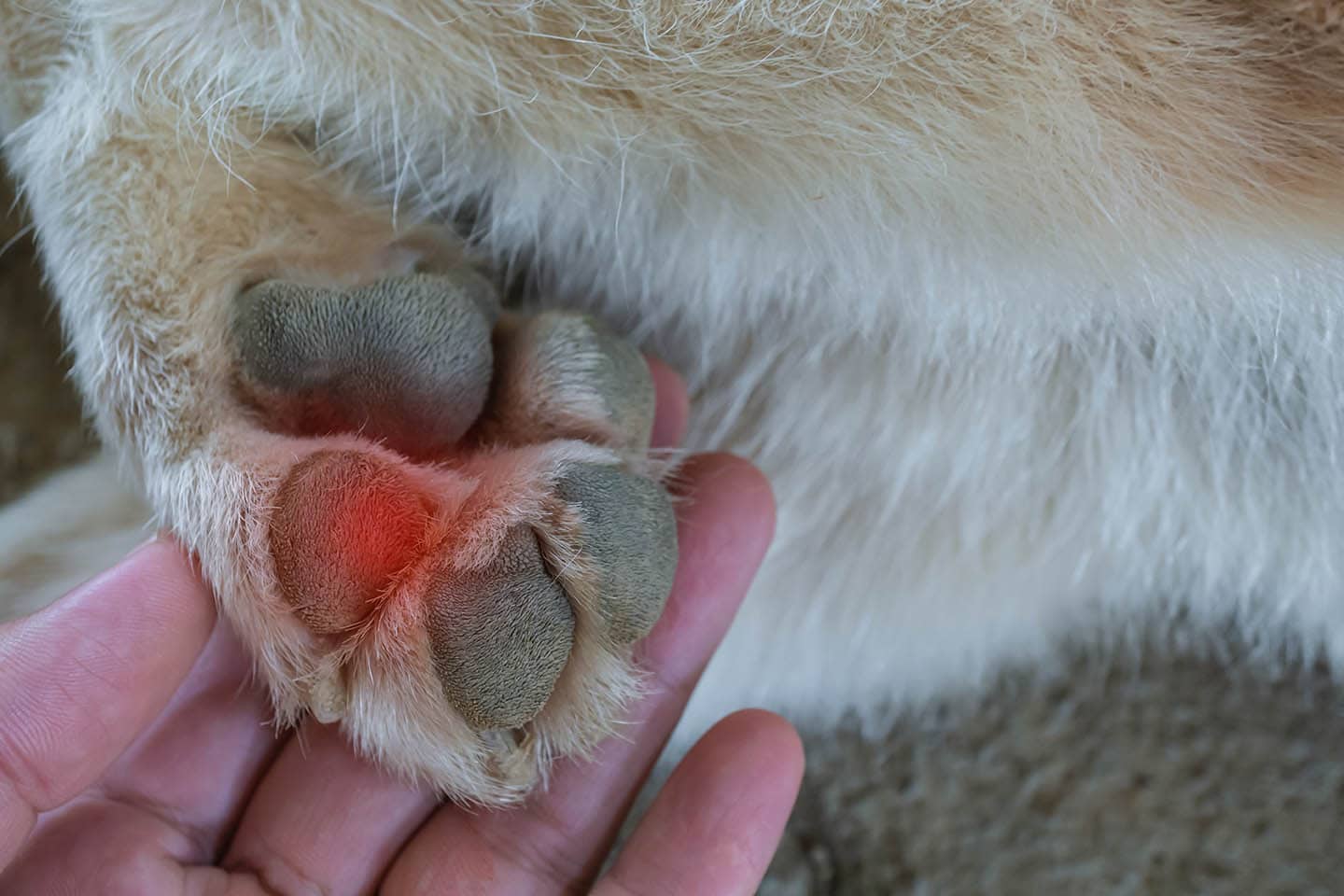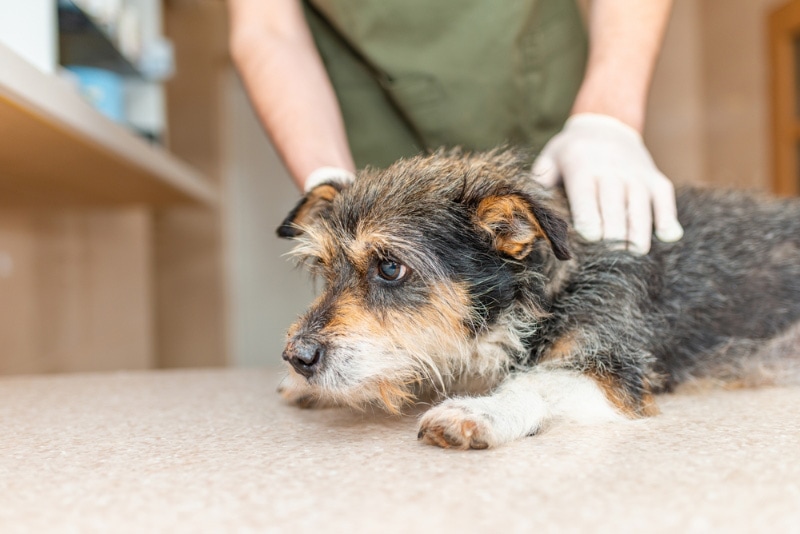Fluid In a Cat’s Lungs: Signs, Causes, & Treatment (Vet Answer)

Updated on

Click to Skip Ahead
The medical term for fluid in the lungs is ‘pulmonary edema,’ which refers to the abnormal accumulation of fluid in the alveoli of the lungs.
Alveoli are tiny, balloon-shaped air sacs where oxygen and carbon dioxide are exchanged between the lungs and the blood during respiration.1 Cats with pulmonary edema struggle to breathe because the alveoli of the lungs are filled with fluid, making the exchange of oxygen and carbon dioxide difficult.
The Signs of Feline Pulmonary Edema
The symptoms of pulmonary edema can vary from mild to severe, depending on how much fluid has accumulated in the lungs.
- Increased breathing effort
- Rapid breathing
- Open-mouth breathing
- Lung crackles
- Abnormal posture—head and neck extended and elbows back
- Weakness
Breathing issues in felines are considered a medical emergency. If your cat is struggling to breathe, it should be seen by a veterinarian as soon as possible.
In addition to the symptoms listed above, symptoms related to the underlying cause of the pulmonary edema may also be seen. For example, cats with pulmonary edema caused by heart disease may have an irregular heartbeat or a heart murmur, while cats with pulmonary edema caused by electrocution may have burns on the tongue and palate from chewing on an electrical cord.
Causes of Feline Pulmonary Edema
Pulmonary edema is divided into cardiogenic and noncardiogenic forms. The term “cardiogenic” refers to the heart.
Cardiogenic pulmonary edema is caused by left-sided congestive heart failure. Left-sided congestive heart failure occurs when the left side of the heart is unable to adequately pump blood to the rest of the body. As a result, there is a backup of blood in the blood vessels of the lungs, which causes fluid to leak from the blood vessels into the alveoli of the lungs.
The most commonly diagnosed feline heart disease that can lead to left-sided congestive heart failure is hypertrophic cardiomyopathy. Dilated cardiomyopathy can also lead to left-sided congestive heart failure.
Noncardiogenic pulmonary edema is a type of pulmonary edema that is caused by conditions unrelated to underlying heart disease. Noncardiogenic pulmonary edema results from an increase in permeability of the blood-air barrier in the lungs, which allows fluids to leak into the alveoli.
There are numerous causes of noncardiogenic pulmonary edema.
- Electrocution (usually from chewing on electrical cords)
- Head injuries
- Seizures
- Anaphylactic reaction
- Septicemia
- Heat stroke
Treating Feline Pulmonary Edema
Cats in respiratory distress due to pulmonary edema will need to be stabilized and given supplemental oxygen. Oxygen can be administered by placing the cat in an oxygen cage, with a mask over the mouth or nose, or with a nasal cannula.
Pain and anxiety can exacerbate breathing difficulties, so sedatives and pain medication are sometimes necessary for cats in respiratory distress. The cat will also be placed in a cool, quiet room to ensure that it remains calm.
Diuretics (drugs that help the body expel extra fluid) are usually administered to cats with cardiogenic pulmonary edema.
Once the cat is stabilized, treatment depends on the underlying cause of the pulmonary edema (eg, antibiotics to treat pneumonia, antiepileptic drugs to control seizures, heart medication to treat heart disease).

The Prognosis for Feline Pulmonary Edema
Pulmonary edema can cause respiratory failure and death if left untreated. The prognosis for a cat with pulmonary edema depends on the cause of the edema and whether the underlying condition can be treated. For example, a cat with pulmonary edema from heart failure will likely need to be on heart medication for the rest of its life to prevent the edema from recurring. Even with medication, there is, however, a risk that the edema will recur. If the pulmonary edema and the underlying heart disease are not treated, it is unlikely that the cat will survive. Conversely, it is possible for a cat with pulmonary edema from anaphylactic shock to make a full recovery if it is treated in time.
Featured Image Credit: Elpisterra, Shutterstock












